It’s hardly surprising that as artificial intelligence becomes more commonplace in the digital era, more and more startup companies are adopting AI models to develop their mobile apps. OpenAI is an advanced intelligence platform. Also, as of January 2023, it had received more than $1 billion in funding, making it the most heavily backed machine learning platform, as documented by Statista.
Companies of all sizes are eager to start reaping the rewards of OpenAI. Microsoft has said that it will offer OpenAI’s ChatGPT as part of its Azure OpenAI service. Likewise, Google has been making adjustments to its policies due to OpenAI’s dramatic rise in popularity.
If big companies are moving quickly to use OpenAI, it means that mobile app development trends are going to change. So, whether your business is big or small, you should pay attention to trends. Let’s talk about the pros and cons of AI in mobile app development so you can decide if you want to use it or not.
What is OpenAI?
OpenAI is a team of scientists, engineers, and researchers working together to develop and advance AI in a responsible and helpful manner.
Its ultimate goal is to bring about a future in which AI technologies are created in a way that is secure, moral, and open to public usage. OpenAI is attempting to solve these problems by creating cutting-edge AI systems in areas like NLP, CV, and robotics. Additionally, they conduct studies on deep learning, generative models, and reinforcement learning.
From chatbots and virtual assistants to picture identification and content creation, OpenAI’s cutting-edge AI models (such as GPT-3, DALL-E, and CLIP) have found widespread use. To accelerate the development and adoption of AI technology, OpenAI has teamed with a number of industry heavyweights, including Microsoft.
Related: Wonders of service utilization for mobile app testing
Pros of OpenAI in mobile app development

By talking about the pros of using OpenAI, you’ll be able to see how well it can help you build your mobile app. You’ll also pick up some useful knowledge on using OpenAI in mobile app development.
1-Using Predictive Analytics with OpenAI to Increase App Revenue
Predictive analytics is a fascinating tool in OpenAI that lets you apply machine learning methods to analyze data and foretell future outcomes. Predictive analytics is used to enhance the functionality of chatbots and other AI-based systems.
Do predictive analysis to know how to estimate sales, spot possible customer churn, or detect fraud using a variety of methods and models, such as linear regression, decision trees, and neural networks. Using OpenAI’s customer understanding features can help you better target your marketing and advertising efforts to keep your current customers and attract new ones, thereby lowering your churn rate.
For example
In-app Purchase Prediction
A model can analyze user activity to determine which users are more likely to make an in-app purchase and then provide those users with tailored advertisements.
By using a model to determine which consumers are most likely to interact with an ad, advertisers may better tailor their messages to those users.
In the long run, this will help you find better ways to make money from your mobile app that works for your target audience and bring in more money.
2-Automation of repetitive tasks to speed up operations
Due to OpenAI’s usage of a wide variety of pre-trained models and machine learning techniques, it’s quite simple to automate some processes. This means OpenAI is excellent at jobs like image recognition, text summarization, and sentiment analysis.
For NLP purposes, you can use OpenAI’s GPT-3. This model can be used to automate operations like replying to emails and addressing consumer questions by recognizing predefined patterns in the incoming text.
For Example
In order to free up customer care professionals to deal with more difficult situations, they can be trained on OpenAI models to automatically answer frequent client inquiries.
3-Better Performance, Shorter Development Time, Less Loss, and Lower Spending
When you learn to automate more and more of your processes, you’ll soon find that your development cycle is shorter and your budget is lower. Moreover, OpenAI can help you automate app testing.
App development time and cost can be reduced with OpenAI’s assistance as you produce test cases and test scripts.
For Example
OpenAI’s pre-trained models, such as GPT-3, can be fine-tuned for specific Natural Language Processing (NLP) applications like language translation, text summarization, and sentiment analysis. This can drastically cut down on the effort and time needed to train a brand new model from scratch, which can lead to significant cost savings.
4-More Productivity with Decreased Error Rates
If you encounter a mistake, OpenAI will explain the cause and offer solutions right away.
For Example
OpenAI models that have been trained on large medical datasets can help with diagnosing tasks, such as spotting diseases in medical images. This has the potential to improve productivity by decreasing the number of mistakes brought on by incorrect diagnoses made by humans.
The machine-learning model is additionally configured to scrutinize the code for errors. With the help of OpenAI, programmers will be able to make fewer mistakes and find and correct faults faster, reducing the likelihood of undesirable outcomes.
5-It’s easy to integrate AI features into apps
You gain access to a wide range of features and services that can be seamlessly included in your app.
For Example
To help with translation, summarization, and question answering, OpenAI’s GPT-3 can create text and carry out natural language processing tasks. It allows you to incorporate OpenAI’s DALL-E and GPT-3 APIs into your mobile app without having to code them from scratch.
You will also get libraries and software development kits (SDKs) for Python, Java, and JavaScript to help with the integration process. With the OpenAI API, you can find many unique ways to build apps because you can add AI features.
6-Enhancing Mobile App Safety
You can protect your apps from malicious software and unauthorized users with the use of OpenAI’s machine learning model. With its help, you may be able to find dangerous patterns in network traffic that hackers could use to their advantage.
OpenAI has a number of safety features, such as biometric identification and encrypted data. It detects unusual activity and sends you a warning so you can take corrective measures right away. For better application protection, it creates secure code snippets and customizations.
The drawbacks of creating an app with OpenAI will now be discussed. You should also be aware of the drawbacks of OpenAI before opting to get in touch with an app development service provider. Just take a peek.
Cons of OpenAI in mobile app development
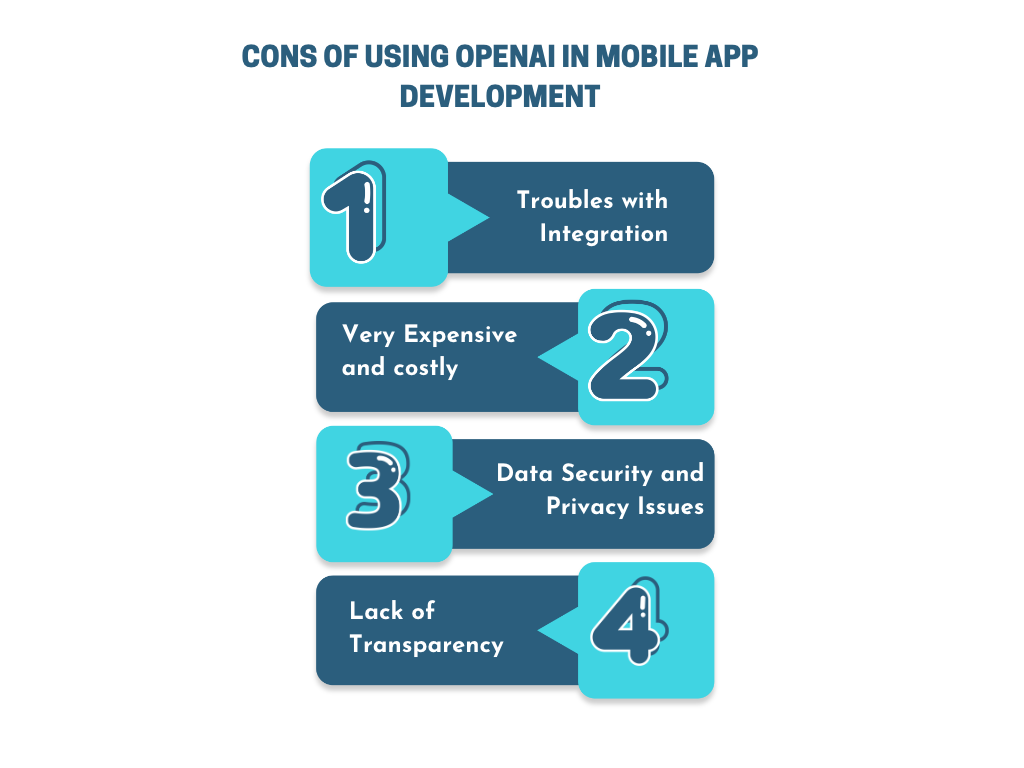
1-Very Expensive
The main drawback of OpenAI is its price, which can be costly for some customers when it comes time to integrate models or update and maintain the apps.
Due to the high cost of using the necessary computational resources, maintaining an app that incorporates OpenAI models is more challenging.
You don’t have to think about this difficulty when using OpenAI if you are prepared to invest in usage, APIs, and app maintenance. There are further drawbacks, though, that you should consider before making a final choice.
2-Troubles with Integration
When trying to use OpenAI models, problems can come up in a number of different ways.
- Resource-constrained devices might make it challenging to integrate large, complicated models into apps.
- Issues with latency and responsiveness might also arise when calling the models via their APIs.
- When incorporating models into the software, there are licensing agreements and limitations on how they can be used.
A lot of work goes into keeping it up-to-date and running smoothly.
As an additional downside, once the model is integrated, you lose a lot of executive power over it. It may restrict the functionality and certain applications.
3-Data Security and Privacy Issues
Since OpenAI is often trained on large quantities of data, there are issues with data privacy and security. Several private and financial details are presented here. In addition, there is a risk of sending private information over the internet while calling APIs. Thus, the risk of a data breach is high if the information is not handled properly.
As a result, OpenAI model users must be mindful of these security risks. To lessen their impact, you can take certain preventative steps. For instance, you may apply security best practices like using secure protocols, encrypting data in transit, conducting frequent security audits, and so on.
4-Lack of Transparency
Due to the complexity of OpenAI’s models, you may find it difficult to grasp at first. Without sufficient explanation, it’s difficult to understand the inner workings of these models and how the information they collect is put to use in making decisions.
It’s also possible that, as a private business, not all aspects of the technology’s design will be made public. This means there will be no issues with privacy, security, or interpretability.
5-Risk of Inaccurate Predictions
It’s important to remember that OpenAI is made up of artificial intelligence, which means it can make wrong predictions. Also, because OpenAI is taught using massive datasets, its results are not always accurate or unbiased.
In addition, openAI’s complexity and inability to be understood make it more likely that it will make wrong predictions. Also, because these models are run by people, there is a good chance that people will make mistakes, which could lead to wrong predictions.
You Want to Utilize OpenAI to Improve Your Mobile App, Do You?
Mobile app developers and users alike stand to gain from the use of OpenAI in the development of mobile apps. With OpenAI’s robust AI models and technology, programmers can build mobile apps that are more responsive to users’ changing requirements, whether that’s through improved efficiency, enhanced personalization, or enhanced intelligence.
There are challenges to implementing OpenAI in mobile app development, but big companies are working to overcome them. What you decide to do is up to you.

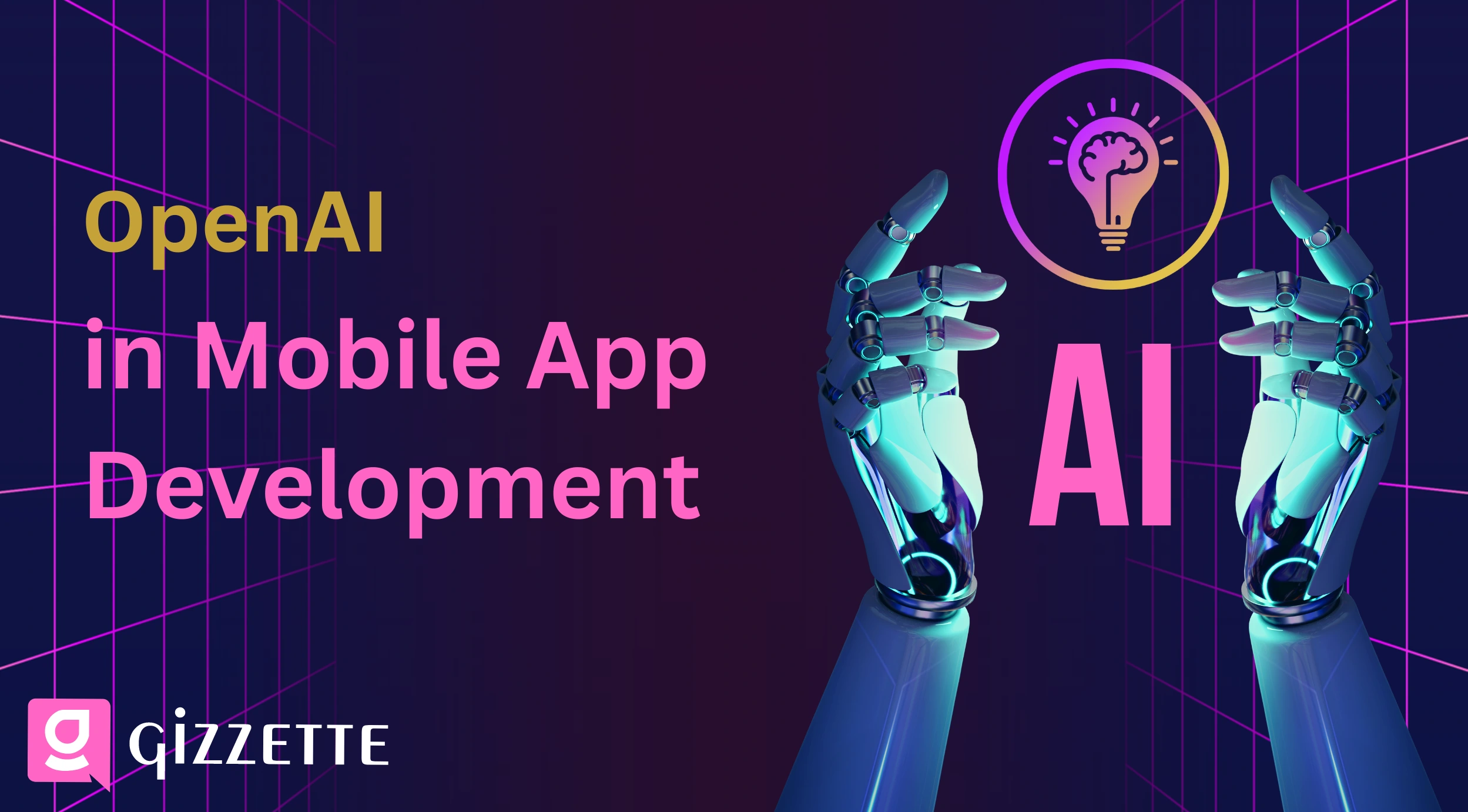

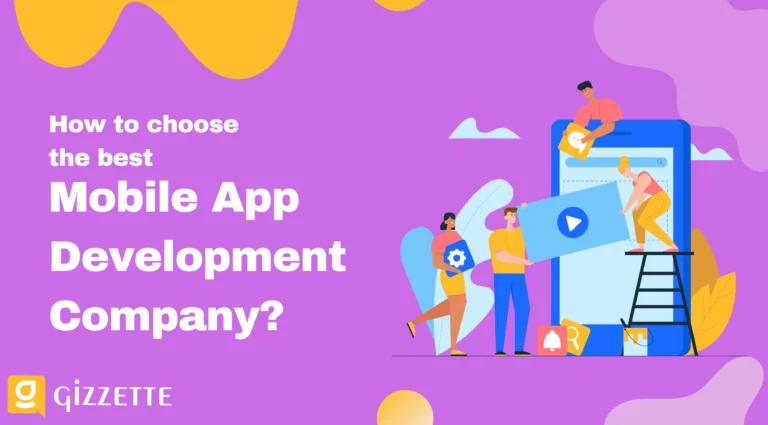



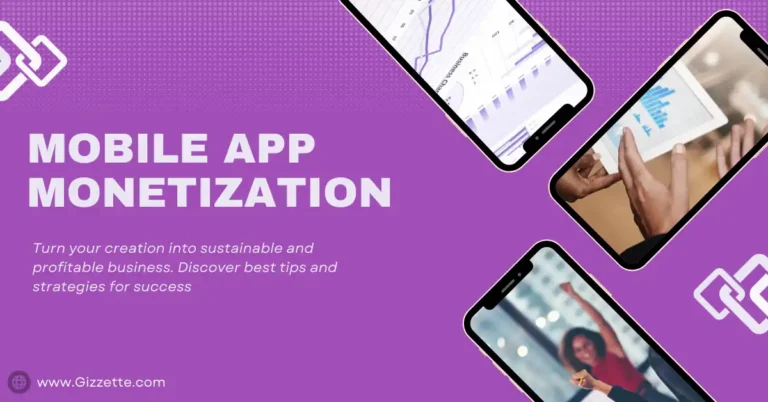
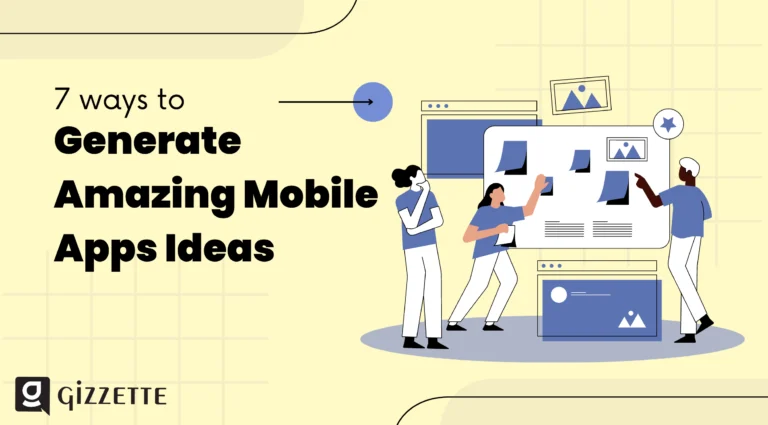
Leave a Comment